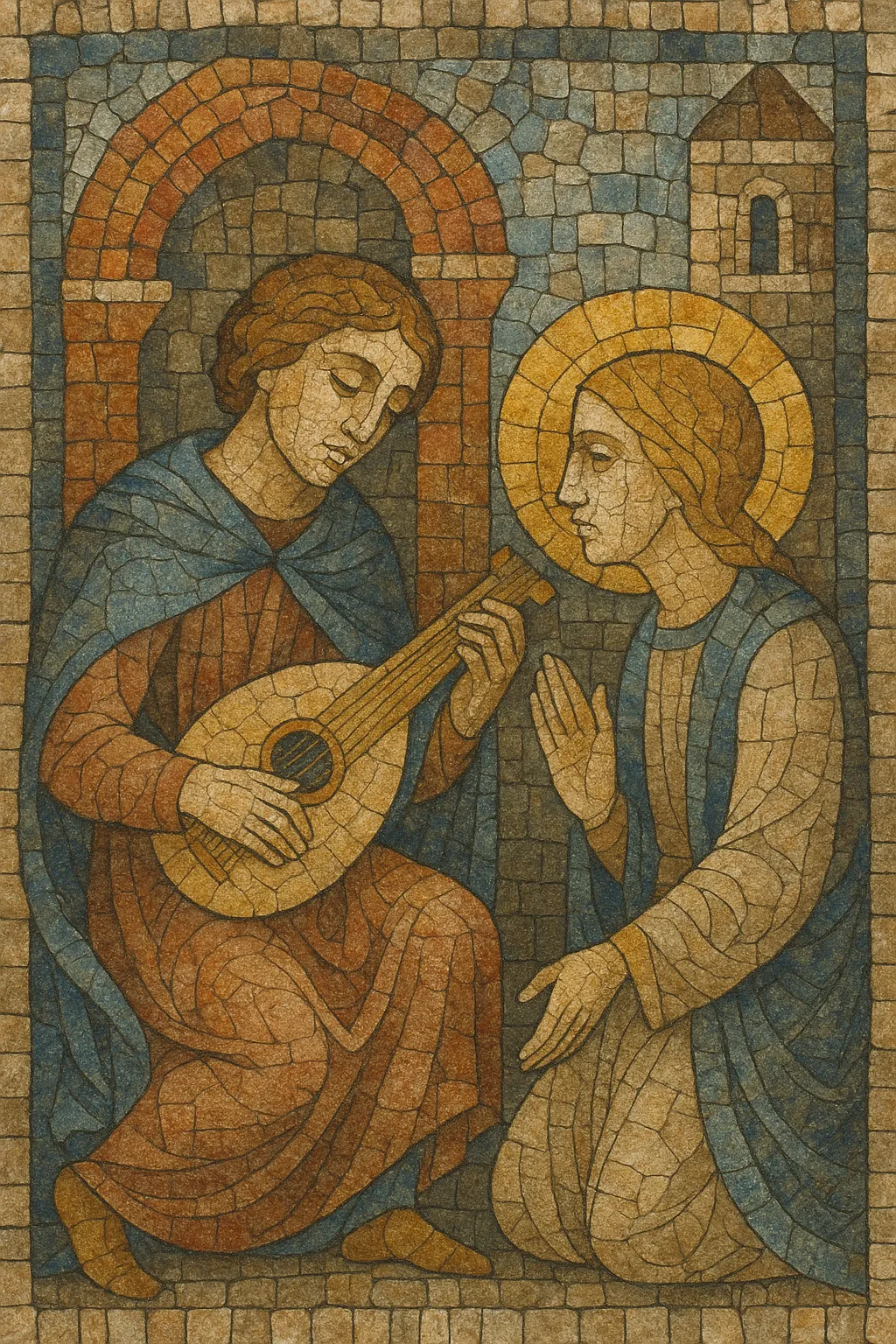Lauda (lauda spirituale) is a medieval Italian devotional song tradition sung in the vernacular by lay confraternities known as Laudesi. Emerging in the 13th century, early laude are mostly monophonic, strophic pieces with clear, syllabic texts that praise God, the Virgin Mary, and the saints, or exhort moral reform.
Musically, early laude sit close to plainchant but favor memorable, refrain-based melodies, limited range, and stepwise motion to encourage communal participation in processions, oratories, and public devotion. From the 15th–16th centuries, laude spirituali also appear in simple polyphonic, largely homophonic settings suitable for congregational singing and devotional gatherings, especially within the orbit of St. Philip Neri’s Oratory in Rome.
Lauda arose in central and northern Italy (notably Umbria and Tuscany) during the 1200s, in the wake of new lay piety movements and the preaching of mendicant orders. The Laudario di Cortona (c. 1260–1270) preserves some of the earliest repertory, showing short, strophic, memorable melodies in the vernacular designed for processional and congregational use. The poetry—often by figures such as Jacopone da Todi—paired direct, affective language with simple musical design so that non-clerical communities could participate.
While early laude were monophonic and closely related to plainchant practice, later centuries introduced polyphonic laude spirituali: chordal, homophonic textures for two to five voices that retained clarity of text and ease of singing. In Florence, confraternities and Savonarola’s reform movement fostered vernacular devotional song; in Rome, St. Philip Neri’s Oratory cultivated the lauda as a vehicle for spiritual edification. Composers such as Giovanni Animuccia and Francesco Soto de Langa produced printed collections of laudi spirituali, bridging medieval devotional song and early modern sacred practice.
Lauda fed directly into Italian sacred dramatic traditions (sacre rappresentazioni) and the oratorian practice that would crystallize in the oratorio. Its accessible, strophic poetics and homophonic textures also intersected with the spiritual madrigal and influenced the vocal language of early opera’s pious scenes. As a living practice, lauda survives in early music performance and continues to inform modern approaches to congregational sacred song in Italy.
Aim for direct, devotional expression in the Italian vernacular. Prioritize congregational singability: short phrases, limited ambitus, and clear, syllabic text setting.


